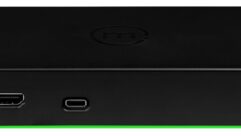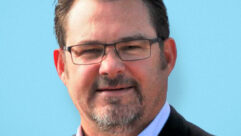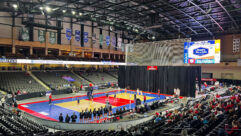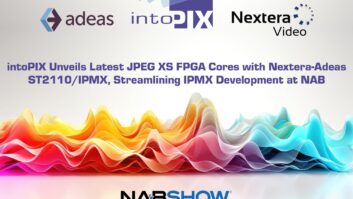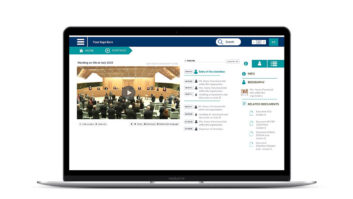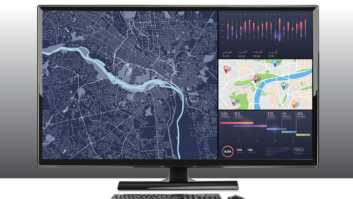By Nathaniel Hecht
NSCA 2002 in Denver was a great success for both manufacturers and attendees. Most manufacturers reported that they received many qualified leads, despite the number of attendees being down by 12 percent from 2001’s figure. It was surprising that the numbers weren’t much lower than that, considering the travel apprehension most people still feel in the aftermath of September 11.
Those who travel for business may not be aware of the trepidation out there, but planes are still not full. Many people I spoke to at the show had not traveled by plane since before September 11. When you consider that the show was located in the largest sales territory in the country (the Rocky Mountains), which only accounts for 3 percent BPA for most manufacturers (generally regarded as the smallest grossing territory), you could see how it would be a disaster when 97 percent of the business is done by people who had to fly into Denver.
However, the show was fantastically well attended, which shows the industry’s strength on several fronts. Business is generally acknowledged as good by contractors in our segment—despite the economic downturn and resultant slow recovery. Despite the naysayers, NSCA’s regional concept of locating the show in different sectors of the country—instead of landing the show in either Las Vegas or Orlando—has proven to be a good one for manufacturers and attendees (if the show is being judged on the quality of leads). Next year’s show in Dallas should be even more widely attended (terrorism not withstanding). As long as the NSCA figures out how to serve food on the first day of the show—unlike what happened this year—all will be well for those with schedules too busy to leave the show floor, let alone the building, in search of lunch.
Speaking of how busy we were at the show, thanks to Steve Filippini, Daniel Ari and Mark Smith from the S&VC staff for their eyes and ears on the show floor. At only 2 1/2 days, the NSCA Expo is way too short (sorry for those who disagree), and without their help the magazine would not have been able to cover the event properly. I have drawn up a general list of things that were unique and new at the show this year; it hardly covers all the show’s highlights. Please see the ongoing coverage in S&VC over the next few months for more product highlights, more articles about what went on at the show (Filippini’s coverage of the Life Safety Seminar in particular) and more news about what NSCA is doing for each and every one of you.
Bose had a number of interesting offerings for the pro contracting market. The company announced the MA12, which is the first Bose line array speaker consisting of 12 closely spaced proprietary 2 1/4-inch drivers in a particularly well-built, narrow and sleek housing. The MA12 ‘s narrow and controlled vertical dispersion and wider horizontal coverage makes it great for voice reinforcement for installations that require an unobtrusive footprint. Adding the Panaray modular bass system gives it the extended low range for more bass-heavy requirements. Two other new products were the FreeSpace Model 16 full-range loudspeaker and the FreeSpace 3 Series II system. For more details visit Bose’s Web site at bose.com.
Listen Technologies announced its new ListenSQ wireless audio listening system, which features a higher level of audio quality and 100 percent digital and frequency agile technology. The LR-100 stationary receiver/power amplifier allows any speaker system to become a wireless delivery system remotely when used with any Listen transmitter. Check out Listen’s Web site at listentech.com.
Meyer Sound introduced some innovative products for the contracting market at NSCA, particularly the M1D and M2D Curvilinear Array Loudspeaker. This small array is only 22″(W) X 7.1″(H) x 8.5″(D) prompting most people who saw it to believe mistakenly that is was some kind of scale model of the larger M3D line array, the design on which it is based. It is actually an amazingly small self-powered package weighing in at only 30 pounds, with a maximum output punch of 123dB SPL. Additionally, the uniquely small MM-4, which is a powerful 4-inch cube, ultracompact wide-range loudspeaker, is unobtrusive and loud at 110dB SPL maximum output and includes a swivel mounting bracket. Learn more about the products at meyersound.com.
Yamaha debuted its new networked amplifier technology with three new CobraNet-enabled digitally controllable products, the PC4800N and PC9500N amplifiers, the NHB32-C network hub bridge and the ACU16-C amplifier control unit. The ACU16-C amplifier control unit is can monitoring as many as 32 amplifiers using a PC via RS-232 or USB. The ACU16-C communicates with amplifiers through an RS-485 bus with CAT-5 cable using CobraNet as an input. The NHB32-C network hub bridge allows 32 channels of AES/EBU to be converted to CobraNet. For more details about the products, go to yamaha.com/proaudio.
Earthworks introduced the new Flex series microphones, which use the already popular cardioid pickup from the SR69 and SR71 models, but with a range of flexible neck lengths for maximum adjustment flexibility. For more information, check the Web site at earthwks.com.
DMX Music has a new innovative program that allows NSCA contractors receive commissions and incremental revenue for selling DMX music products into the business music market. With few opportunities in this area, the program is a significant change in the way content providers normally conduct their business. Surf to QQQ for more information.
Soundtube’s new ceiling speaker, the CM-EZ-8, is a two-way, eight-inch woofer system designed for rapid installation in sheetrock and drop-tile applications. The system uses an integrated backcan design with a patented blindmount, springloaded snapping cam device that enables rapid installation. Additionally, the system is UL listed for plenum spaces and has 70V, 100V and 8 ? hardwire leads. Check out the system at soundtube.com.
Denon showed a new state-of-the-art digital video device. The DN-V1700 provides repeated DVD-quality digital pictures and images or digital BGV with or without sound in a variety of formats from multiple sources such as PCMCIA cards, HDD PC cards, hard drives, MPEG-2 and I-picture file formats. Output is switchable between NTSC and PAL standards. The internal 20GB hard drive can yield approximately nine hours of VHS quality or 5 1/2 hours of DVD-quality programming. For more information, check Denon’s Web site at denon.com.
Allen and Heath announced the return of the Real Time Analyzer (RTA) software package for free trial on its Web site at allen-health.com/rta.asp which consists of a signal generator and a spectrum analyzer. The package returns to the site after a recent change of Web hosting. Check out other products announced at the show at allen-heath.com.
dbx showed off its new DriveRack P.A., which is the latest product in the DriveRack line. Designed for P.A. specific installations, it is a 2-input, 6-output all-inclusive loudspeaker controller with 28 band mono or dual graphic EQ, multiband parametric, multiple crossover options and limiters on all outputs, as well as advanced feedback suppression, the famous 120A subharmonic synthesizer and built-in RTA. For more, see dbxpro.com.
Electro-Voice had some interesting products at NSCA, including four EVID ceiling speakers based on the company’s innovative industrial design of premium surface-mount loudspeakers. The line consists of one 4-inch and two 8-inch woofer models, as well as a 10-inch quickmount, ceiling mount subwoofer. The new X(lc) compact line-array system, based on the successful X-Line line-array system, was also shown. Go to electrovoice.com for more details.
Peavey introduced some interesting new products via its Architectural Acoustics division. A first in the new digitool line, the Digitool MX digital audio processor is a DSP audio processing system designed for standalone operation and features eight mic or line-level inputs, 24-bit converters and dual DSP engines. The system includes full matrix mixing, dynamic processing, delay and full-blown EQ. Additionally, the new Freq-Out 116 antifeedback processor eliminates feedback and improves system gain without compromising sonic performance. See aa.peavey.com for additional information.
QSC announced the introduction of its new DSP-4 digital signal processor, which is based on the success of the DSP-3. This second generation unit incorporates XLR-balanced connectors, improved A/D and D/A converters and upgraded software. Also, the RAVE/S-24, an enhanced version of its digital audio transport system providing 24-bit/48kHz A/D and D/A converters, was unveiled. Go to qscaudio.com to explore these products.



